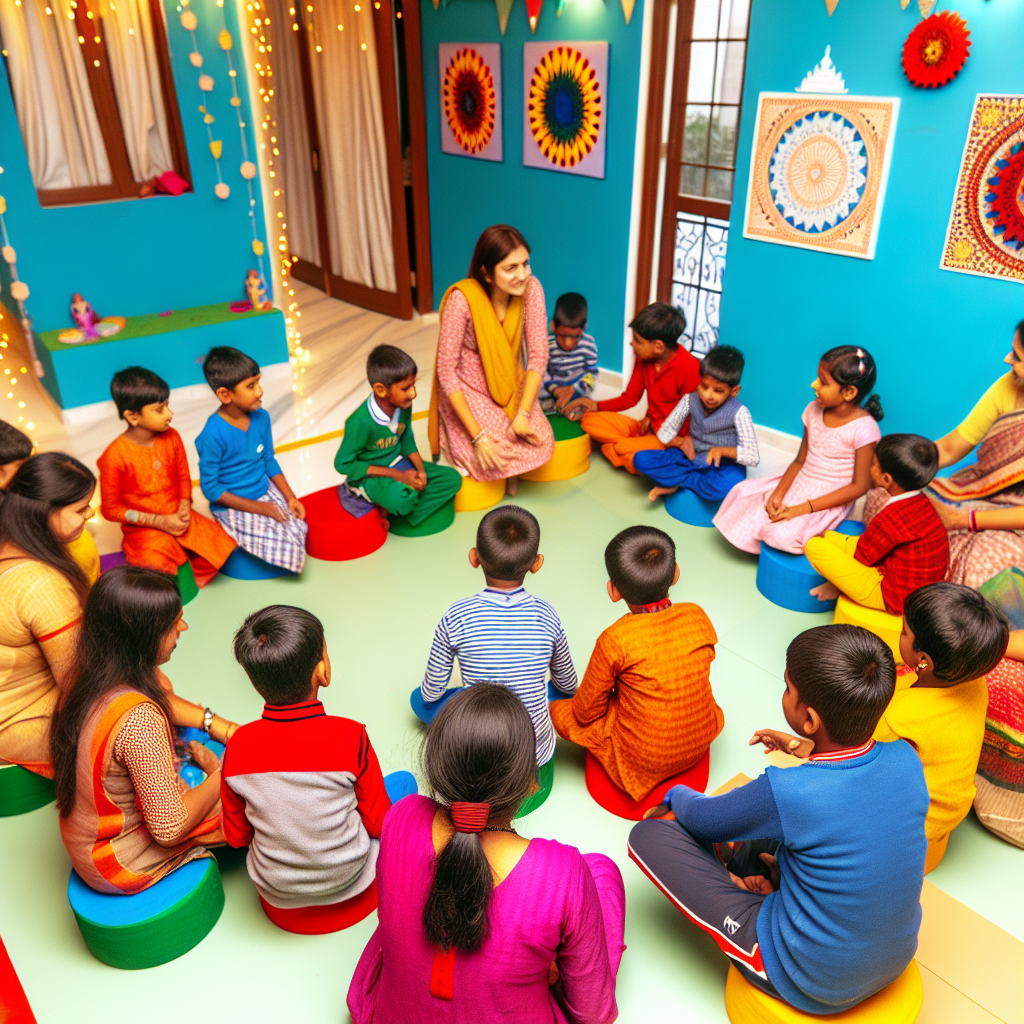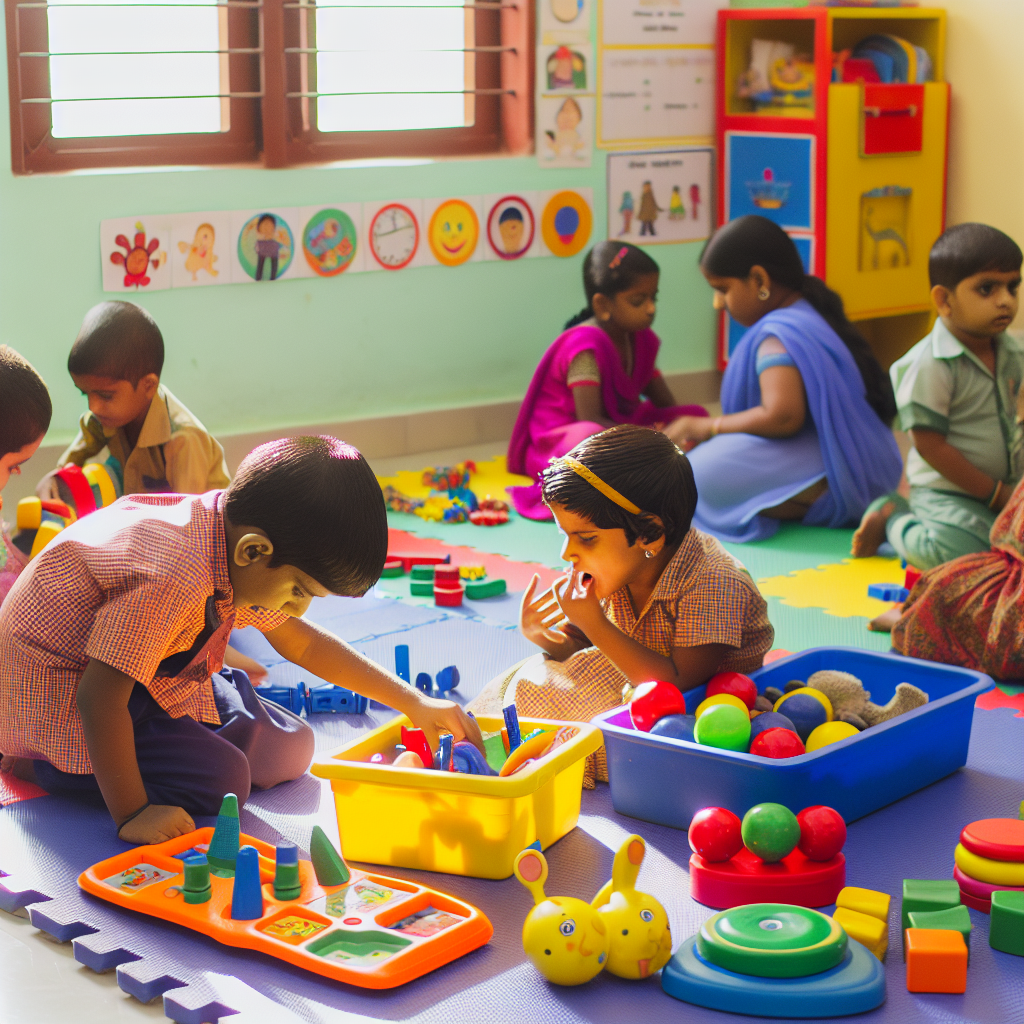How to Foster Emotional Development in Children with Special Needs
Understanding Emotional Development in Children with Special Needs
Emotional development is a critical aspect of a child’s overall growth, encompassing their ability to recognize, express, and manage emotions. For children with special needs, this process may require tailored approaches due to unique challenges they face. Understanding emotional development in children with special needs begins with recognizing that their emotional milestones may differ from those of typically developing peers.
Research shows that children with special needs, such as autism spectrum disorder (ASD) or ADHD, may experience difficulties in identifying and expressing emotions. For instance, a study published in the Journal of Autism and Developmental Disorders found that children with ASD often struggle with emotional recognition and empathy. This highlights the importance of targeted interventions.
Parents, caregivers, and educators must familiarize themselves with the specific emotional development patterns associated with various disabilities. This knowledge can help in creating effective strategies to support these children. For example, understanding that a child with sensory processing disorder may feel overwhelmed in noisy environments can guide emotional support efforts.
By focusing on the individual needs of each child, we can foster emotional development in a way that respects their unique abilities and challenges. This foundational understanding sets the stage for implementing practical strategies to nurture emotional growth.
Recognizing the Unique Emotional Needs of Each Child
Every child is unique, and this is especially true for children with special needs. Recognizing their individual emotional needs is essential for fostering emotional development. For example, a child with Down syndrome may require more encouragement to express their feelings, while a child with anxiety may need reassurance and a calm environment.
One effective way to identify these needs is through observation. Pay attention to how the child reacts to different situations, people, and environments. For instance, does the child become withdrawn in social settings? Do they exhibit frustration when unable to communicate effectively? These observations can provide valuable insights.
Another approach is to engage in open dialogue with the child, if possible, and their caregivers or therapists. This collaborative effort ensures that emotional support strategies align with the child’s specific needs. For example, a therapist might suggest using visual aids to help a non-verbal child express emotions.
Recognizing unique emotional needs also involves being flexible and adaptive. Emotional development is not a one-size-fits-all process, and strategies must be tailored to suit the child’s evolving requirements. This personalized approach is key to fostering emotional growth effectively.
Building a Safe and Supportive Environment
Creating a safe and supportive environment is fundamental to fostering emotional development in children with special needs. A secure setting allows children to explore their emotions without fear of judgment or punishment. This is particularly important for children who may already feel vulnerable due to their disabilities.
Start by ensuring the physical environment is conducive to emotional growth. For example, a quiet, clutter-free space can help children with sensory sensitivities feel more at ease. Incorporating calming elements like soft lighting and soothing colors can further enhance the environment.
Emotional safety is equally important. Encourage positive reinforcement and avoid criticism. Celebrate small achievements, such as a child expressing their feelings through words or gestures. This builds their confidence and reinforces emotional expression as a positive experience.
Real-world examples highlight the importance of a supportive environment. For instance, a study from the National Institute of Mental Health found that children with ADHD showed improved emotional regulation when their home environment was structured and predictable. This underscores the value of creating a stable and nurturing space.
Encouraging Open Communication and Expression
Open communication is a cornerstone of emotional development. For children with special needs, encouraging them to express their feelings can be challenging but immensely rewarding. Start by modeling emotional expression yourself. Use simple language to describe your feelings, such as “I feel happy because you shared your toy with me.”
Visual aids can be particularly helpful for children who struggle with verbal communication. Emotion charts, flashcards, or apps designed for emotional learning can provide alternative ways for children to express themselves. For example, a child with non-verbal autism might use a picture of a smiley face to indicate happiness.
Active listening is another crucial component. When a child attempts to communicate their feelings, give them your full attention. Validate their emotions by saying things like, “I understand you’re feeling upset. It’s okay to feel that way.” This builds trust and encourages further expression.
Case studies show the effectiveness of open communication. For instance, a program implemented in inclusive classrooms found that children with special needs who were encouraged to express their emotions showed significant improvements in social interactions and emotional regulation.
Teaching Emotional Regulation Skills
Emotional regulation is the ability to manage one’s emotions effectively, and it is a vital skill for children with special needs. Teaching these skills requires patience and consistency. Start with simple techniques like deep breathing exercises or counting to ten when feeling overwhelmed.
Mindfulness activities can also be beneficial. For example, guided meditation or yoga can help children learn to calm themselves during stressful situations. These practices have been shown to improve emotional regulation in children with ADHD and anxiety disorders.
Another effective strategy is using social stories. These are short narratives that describe specific situations and appropriate emotional responses. For instance, a social story might explain how to handle frustration when losing a game. This helps children understand and practice emotional regulation in real-life scenarios.
Parents and caregivers play a crucial role in teaching these skills. By modeling emotional regulation themselves, they provide a powerful example for children to follow. Consistent practice and positive reinforcement can lead to significant improvements over time.
Using Play and Creative Activities to Foster Emotional Growth
Play and creative activities are excellent tools for fostering emotional development in children with special needs. These activities provide a safe and enjoyable way for children to explore and express their emotions. For example, role-playing games can help children practice empathy and understand different perspectives.
Art therapy is another effective method. Drawing, painting, or sculpting allows children to express emotions they may not be able to articulate verbally. A study published in the Art Therapy Journal found that children with autism who participated in art therapy showed improved emotional expression and social skills.
Music therapy can also be beneficial. Singing, playing instruments, or listening to music can evoke emotions and provide an outlet for expression. For instance, a child with Down syndrome might find joy and relaxation in singing their favorite songs.
Incorporating play and creativity into daily routines makes emotional development a natural and enjoyable process. These activities not only foster emotional growth but also strengthen the bond between children and their caregivers.
Collaborating with Therapists and Specialists
Therapists and specialists are invaluable resources for fostering emotional development in children with special needs. Collaborating with professionals ensures that strategies are tailored to the child’s specific needs and challenges.
Occupational therapists, speech therapists, and psychologists often have specialized techniques for teaching emotional skills. For example, a speech therapist might use storytelling to help a child with language delays express their feelings.
Regular consultations with therapists can provide insights into the child’s progress and areas that need improvement. For instance, a psychologist might recommend cognitive-behavioral therapy (CBT) for a child struggling with anxiety.
Parents and caregivers should actively participate in therapy sessions whenever possible. This collaboration not only enhances the effectiveness of interventions but also equips caregivers with strategies they can implement at home.
Promoting Social Interaction and Peer Relationships
Social interaction is a key component of emotional development. For children with special needs, building peer relationships can be challenging but highly rewarding. Structured activities like group games or collaborative projects can encourage interaction in a controlled environment.
Inclusive education settings provide opportunities for children with special needs to interact with their peers. For example, a child with ADHD might learn teamwork and patience by participating in a group science project. These interactions foster emotional growth and social skills.
Parents can also arrange playdates or enroll their children in extracurricular activities that align with their interests. For instance, a child who loves animals might benefit from joining a pet care club, where they can bond with peers over shared interests.
Real-world examples highlight the importance of social interaction. A study from the University of California found that children with autism who participated in peer-mediated interventions showed significant improvements in social skills and emotional understanding.
Celebrating Progress and Milestones in Emotional Development
Celebrating progress is essential for fostering emotional development in children with special needs. Recognizing achievements, no matter how small, boosts the child’s confidence and motivation to continue growing emotionally.
For example, if a child successfully expresses their feelings for the first time, celebrate this milestone with positive reinforcement. This could be verbal praise, a small reward, or a fun activity they enjoy.
Documenting progress can also be helpful. Keep a journal or create a scrapbook of the child’s emotional milestones. This not only serves as a record of their growth but also provides a visual reminder of their achievements.
Parents and caregivers should share these milestones with therapists and educators. Collaborative celebration reinforces the child’s accomplishments and encourages continued efforts from everyone involved in their development.
Empowering Parents and Caregivers with Resources and Strategies
Parents and caregivers are the backbone of emotional development for children with special needs. Empowering them with resources and strategies ensures they can provide effective support. Online platforms like Prashast offer valuable information on disability screening and inclusive education.
Workshops and support groups can also be beneficial. These provide opportunities to learn from experts and connect with other parents facing similar challenges. For example, a workshop on emotional regulation techniques might equip parents with practical tools they can use at home.
Books and online courses focused on emotional development for children with special needs are excellent resources. Titles like “The Out-of-Sync Child” offer insights into understanding and supporting children with sensory processing issues.
Finally, self-care is crucial for parents and caregivers. Taking time to recharge ensures they can provide the best possible support for their children. Remember, fostering emotional development is a journey that requires patience, dedication, and collaboration.
FAQ
- What is emotional development in children with special needs?
- Emotional development refers to the process by which children learn to recognize, express, and manage their emotions. For children with special needs, this process may require tailored approaches due to unique challenges.
- How can parents foster emotional development in children with special needs?
- Parents can foster emotional development by creating a supportive environment, encouraging open communication, teaching emotional regulation skills, and collaborating with therapists and specialists.
- Why is social interaction important for emotional development?
- Social interaction helps children develop empathy, communication skills, and emotional understanding. For children with special needs, structured social activities can provide opportunities for meaningful peer relationships.
- Where can I find resources for supporting emotional development?
- Online platforms like Prashast offer valuable resources on disability screening and inclusive education, which can support emotional development in children with special needs.
“`



Good https://is.gd/tpjNyL
Very good https://is.gd/tpjNyL
Awesome https://is.gd/tpjNyL
Awesome https://shorturl.at/2breu
Good https://shorturl.at/2breu
Good https://shorturl.at/2breu
Awesome https://shorturl.at/2breu
Good https://lc.cx/xjXBQT
Awesome https://lc.cx/xjXBQT
Very good https://lc.cx/xjXBQT
Good https://t.ly/tndaA
Good https://t.ly/tndaA
Awesome https://t.ly/tndaA
Awesome https://rb.gy/4gq2o4
Good https://rb.gy/4gq2o4